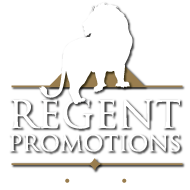CREATIVE, GRAPHIC DESIGN & BRANDING

Creative & Graphic Design – It’s All About Branding!
Branding your business is about creating an experience. Whether it is starting from the beginning with creating a logo or working on complete Brand Management, Regent Promotions team of experts will walk with you to make sure your brand carries the message to grow your business.
Graphic design, also known as communication design, is the art and practice of planning and projecting ideas and experiences with visual and textual content. The form of the communication can be physical or virtual, and may include images, words, or graphic forms. The experience can take place in an instant or over a long period of time. The work can happen at any scale, from the design of a single postage stamp to a national postal signage system, or from a company’s digital avatar to the sprawling and interlinked digital and physical content of an international newspaper. It can also be for any purpose, whether commercial, educational, cultural, or political.
Design that’s meant to be experienced in an instant is the easiest to recognize and has been around the longest. For over a hundred years, designers have arranged type, form, and image on posters,advertisements, packages, and other printed matter, as well as information visualizations andgraphics for newspapers and magazines. Motion graphics are equally predetermined and crafted, but are meant to be experienced over a fixed time span, such as for the opening credits of a movie or an online video meant to accompany a newspaper article.
The design of books and magazines also has a long history. Whether physical or digital, these are objects that are meant to be enjoyed over time, during which the reader has control over the pace and sequence of the experience. In books, the content usually comes before the design, while in magazines, the design is a structure that anticipates written and visual content that hasn’t yet been created. Some commercial websites or exhibition catalogs also fit in this category, as do digital or physical museum displays that show information that doesn’t change. All have fixed content, but the user or reader determines their own path through the material.
Many designers also produce systems that are meant to be experienced over time, but aren’t confined to the making of objects. Wayfinding, which is a form of environmental graphics, refers to the branding and signage applied throughout and on buildings. While each sign or symbol in a public or private building is a work of design, they’re all part of a larger system within the building. The design of the system—the relationships between all of those parts—is where the designer brings value. Similarly, while all of the artifacts of a commercial or institutional brand, such as a business card, sign, logo, or an advertisement are individual expressions of design, how those are experienced together and over time is the design work. No part of it has been created without considering the others, or without thinking through how a target customer will encounter and then develop a relationship with that brand.
Designers are also responsible for interactive designs where the content is fluid, sometimes changing minute to minute, as well as interfaces that help users navigate through complex digital experiences. This work differentiates itself by adding another element: responding to the actions of the viewer. Editorial design for web and mobile is the most tangible example of content-driven work in this area, including publication websites, mobile apps, and blogs. Some design involves the presentation of streaming information, also known as data visualization. Other designers work on digital products, which are digital services or platforms that can be brought to market. Product design for web and mobile is related to software design. Sometimes different designers work on the user interface design (UI), which mostly refers to the individual layouts of pages, and the user experience design (UX), or the total experience of the user as they move through a website or app.
Type design carries aspects of almost all of these things. While the form of a single letter has meaning, a typeface, like a brand, is also composed of the relationships between characters that work together to create meaning. And like software, typefaces are licensed and can be installed on individual computers.
Depending on the scale of the context in which a designer works, the work may include one, some, or all of these things in the course of a year. Larger companies, agencies, teams, or studios may lean towards specialization, while smaller studios and groups may need to have each individual capable, if not an expert, in multiple areas.

